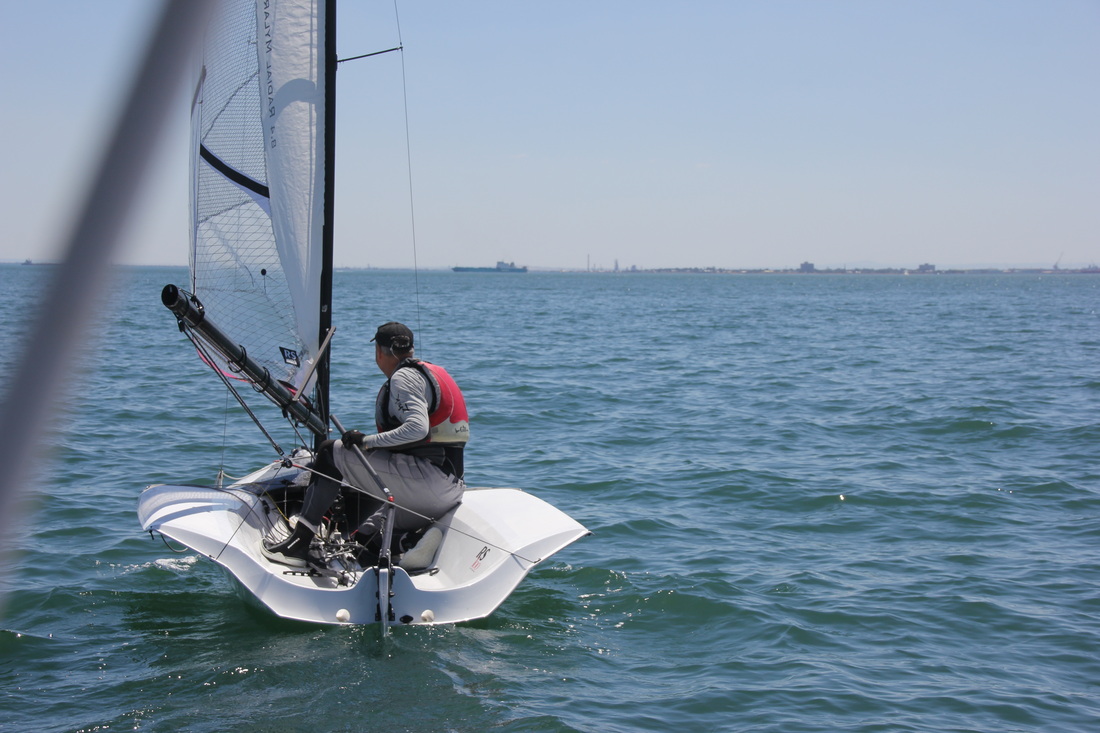

All sailors must learn how to tackle lulls. Changes in wind pressure are a constant in sailing and lulls tend to be the area that many of us struggle with.
FREE CHAMPIONSHIP SAILING GLOVES
Keep it up in the lulls
One thing that we must do is maintain the proper angle of heel and be quick to shift your weight to maintain that heel before the boat flattens. Anticipate lulls and adjust controls (vang, Cunningham and even outhaul) in anticipation of the changing pressure. Don’t really ease or bear off.
Fight your instinct to bear off, and instead, allow the jib tales to stall while the boat decelerates over the next few boat lengths. Then ease both the main and jib sheets just a little to keep both leeches from hooking in with the decreased pressure.
Wait until you are down speed before I readjusting your steering angle to match the new lighter wind. You are now able to keep your height as you transition into the lull with little loss.
Your telltales will mislead you until both the hull speed and true air speed adjust.
SAILING TO WIN BOOK AND BONUSES
Connecting The Lulls
The heading is a “tongue in cheek” comment by a blogger by the name of “Yarg” who wrote in 2012 the following words of wisdom.
“Sailing in the puffs was routinely 10% faster and occasionally 50% faster than sailing in the lulls. Although it was difficult to stay in a puff for very long, even downwind, those who connected the puffs the best were consistently ahead of those who didn’t.”
“I think connecting the lulls was caused by a combination of impatience and confusing lulls with headers. When other boats were sailing higher and faster in the puffs, it was hard to accept that their puffs might soon subside or their wind might shift and remember that the best we could do was sail to the next puff within our own reach.
The lull started to feel like a header (a boat going slowly can’t point as high as a boat going faster), so there was an irresistible temptation to tack. That subsequent tack in the lull was very laborious and after completing it, the sailors found themselves still going low and slow. Having completely lost sight of finding a puff, they thought, “It must be another header!” and they desperately tacked again.
Instead of sailing through the lull toward more wind, they ended up spending needless time in the lull. With a little patience and clarity, they might have spotted the next puff and sailed toward it.
The idea of connecting the puffs and maintaining your angle of point in the lulls to get faster to the next puff is one sure way to win races.
FREE BOOK – TIPS FROM SAILING LEGENDS
Bearing off in a lull to get your luff telltales streaming is a bad idea for 3 reasons.
- Unnecessary steering will slow you down. If you are patient, the boat will slow down due to the lull, moving the apparent wind back closer to its direction before the lull. If the lull persists, your final heading heading might be only a touch lower than your original heading. If you steer down initially, you will then need to steer up again as the apparent wind comes back to its original direction.
- Avoid losing distance to windward. When you bear off, you are losing distance to windward. If you don’t bear off, you can use your boat speed to coast forward on your original heading and gain distance to windward.
- Get to new wind sooner. Following the lull, you can often expect new wind from the same direction. If you hold your heading, you are “pinching up” to this new expected wind.

